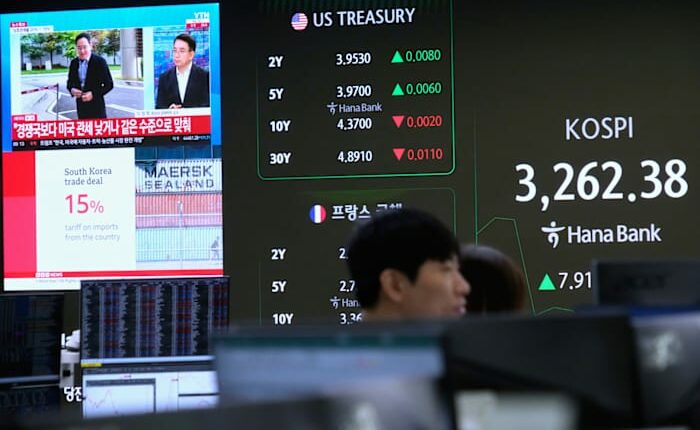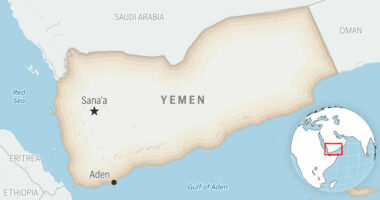Share this @internewscast.com

MANILA – Asian markets showed varied performance on Thursday after most U.S. stocks saw a decline. Concerns grew on Wall Street over the likelihood of the Federal Reserve implementing significant interest rate cuts by September to boost the economy.
Japan’s Nikkei 225 climbed by 0.9% to reach 41,020.91, following the Bank of Japan’s decision to maintain interest rates at 0.5% and raise its inflation projections. This decision came after a new trade agreement between Tokyo and Washington.
Hong Kong’s Hang Seng index fell 1% to 24,920.67, while the Shanghai Composite Index slid 0.7% to 3,588.73.
In Seoul, the Kospi dipped by 0.3% to 3,244.40, subsequent to South Korea’s agreement on a 15% tariff deal with the U.S. The deal includes no tariffs on American vehicles, trucks, and agricultural goods. It also encompasses South Korea’s agreement to purchase $100 billion in U.S. energy imports and committing $350 billion to U.S. investments.
Australia’s S&P ASX 200 shed 0.1% to 8,743.80. India’s BSE Sensex added 0.2% to 81,481.86. Taiwan’s TAIEX rose 0.4% to 23,551.92.
According to Rabo Bank, considering the trade deals the U.S. has secured with various nations, such as Bangladesh, it seems imminent that India will engage in negotiations to maintain its beneficial access to both the U.S. and other markets influenced by U.S. President Donald Trump’s economic strategies.
Rabo further commented that any agreement between the U.S. and India would likely entail India buying American arms and energy products, as well as providing favorable access to U.S. agricultural goods.
It also mentioned, “Australia may face setbacks as the U.S. increases wheat exports to Indonesia and Bangladesh and boosts LNG supplies to Japan and South Korea, potentially disrupting Australian exports from these established markets.”
Trump on Wednesday announced a 25% tariff on imports coming from India, along with an additional tax because of India’s purchases of Russian oil, beginning on Aug. 1. That’s when stiff tariffs Trump has proposed for many other countries are also scheduled to kick in, unless they reach trade deals that lower the rates. But the U.S. president said the two countries were still in negotiations.
On Wall Street on Wednesday the S&P 500 edged down by 0.1%, coming off its first loss after setting all-time highs for six successive days. The Dow Jones Industrial Average dropped 171 points, or 0.4%, and the Nasdaq composite rose 0.1%.
Stocks felt pressure from rising Treasury yields in the bond market after the Federal Reserve voted to hold its main interest rate steady. The move may upset Trump, who has been lobbying for lower interest rates, but it was widely expected on Wall Street.
Fed Chair Jerome Powell may have surprised investors by pushing back on expectations that the Fed could cut rates at its next meeting in September. Besides Trump, two members of the Fed’s committee have also been calling for lower rates to ease the pressure on the economy, and they dissented in Wednesday’s vote.
But Powell would not commit to a September cut in rates, pointing to how inflation remains above the Fed’s 2% target, while the job market still looks to be “in balance.”
A cut in rates would give the job market and overall economy a boost, but it could also risk fueling inflation when Trump’s tariffs may be set to raise prices for U.S. consumers. The Fed’s job is to keep both the job market and inflation in a good place.
In other dealings on Thursday, U.S. benchmark crude oil lost 4 cents to $69.96 per barrel while Brent crude, the international standard, shed 13 cents to $72.34 per barrel.
The U.S. dollar fell to 148.87 Japanese yen from 149.44. The euro rose to $1.1422 from $1.1412.
___
AP Business Writer Stan Choe contributed.
Copyright 2025 The Associated Press. All rights reserved. This material may not be published, broadcast, rewritten or redistributed without permission.













